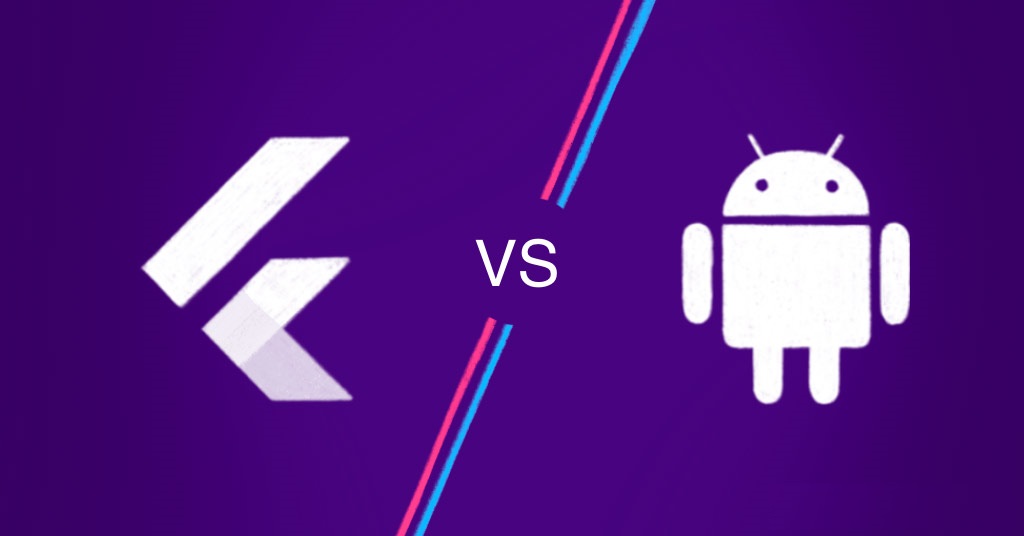To engage with your customers, you must have a dedicated mobile app. The level of personalized engagement a mobile app offers can’t be matched by your website.
App developers use different kinds of software to create mobile applications. And two of the most popular software in the market used to create mobile apps are Flutter and Android Studio. Both have their advantages, and both are widely accepted by businesses & startups worldwide.
Flutter comes with Dart, a highly responsive and powerful programming language. On the other hand, Android Studio supports Java and Kotlin languages to build codes for the mobile app.
Flutter is known as a cross-platform mobile development software. Android is considered a part of the Integrated Development Environment (IDE). Hence, Android is considered a native technology. Further, if we go deeper into Flutter vs Native, we will find a lot of differences. However, it is somewhat challenging to find in the first place.
To make your task easy, we would look at a comparison of Flutter vs Android based on various essential factors as follows. Hence, you can easily choose the best amongst them.
So, let’s start.
5 differences between Flutter and Android Studio
Let us take a closer look at both Flutter and Android Studio to identify the key differences between them.
Classification
Flutter is a mobile SDK that is widely used for cross-platform mobile app development. Android studio is classified in the category of the tech stack IDE (Integrated Development Environment). It is mainly centered around the IntelliJ IDEA and it offers exciting features and unique ideas over the eclipse.
Technical architecture
You must be well informed about the technical architecture of Flutter and Android Studio to make an informed decision regarding which one is best for your needs. Although both of these are created by Google, their technical architecture is completely different. In the case of Flutter, it relies on a highly dynamic programming language called Dart. On the other hand, Android Studio allows the app developer to use either Java or Kotlin to develop codes for the mobile app.
If you dig a bit deeper, you will find that a mobile app developed with the help of Java/Kotlin offers very high performance and ease of use as each module is developed natively. On the other hand, if you use Flutter for your mobile app development, then the Dart framework does not require any extension to communicate with the native modules as most of the components it needs are inbuilt. In other words, Flutter offers the app developer everything he/she needs for app development inside the Flutter engine itself.
Installation
Installation of the Android Studio is quite easy. You have to download and click on the executable file to install the Android Studio on your machine. All the tools that you would need to build your mobile app come inbuilt in IDE itself. Every time you make any change while writing the code in the app, it has to rebuild itself. You would need third-party interference to view the changes you have made within the app. This process takes time as Gradle has to deal with dependency management for the Android apps.
Installing flutter is also very simple, you have to download the Flutter SDK and install it on your machine. If you want to execute all the Flutter commands in your Windows console, then you have to add Flutter to the path environment variable. Flutter comes with a hot reload feature, which allows the developer to see any change he/she makes in the app code in real-time, which accelerates the app development process.
UI components and APIs
The app developer has to spend a lot of their time and energy while building a highly attractive UI. Therefore, any framework to become successful needs to provide app developers the ability to access native modules without much hassle. In this regard, the Android Studio with its built-in UI components is truly amazing and well coded. On the other hand, Flutter uses widgets extensively to construct highly complicated UIs. The widget library of Flutter offers a range of widgets that support material components for both the Android and Cupertino platforms.
Testing support
Android Studio offers the app developer a great documentation feature. It also includes a range of testing features, which allows the app developer to test the application in the Android Studio itself or they can even use Gradle for this purpose. You can also use a range of Java and Kotlin frameworks available online for lower-level UI testing.
Flutter also provides highly robust testing features that allow the app developer to test the application at multiple levels – unit level, widget level, and integration level. It also comes with superior documentation on testing. Flutter even provides you with a widget testing feature, through which you can run widget tests to check the UI and also for testing them at the run speed on real devices.
Conclusion
Android Studio and Flutter are both highly sophisticated mobile app development software. They have evolved over time and now offer top-notch features required to create a highly functional mobile app. If you are looking for software to build cross-platform apps, then both Flutter and Android Studio fits the bill perfectly. Both of these have their advantages and when you go through their key features you would find it easier to identify which one is best for your needs.
Hi, I am Adam Smith, Admin Of TechSketcher, Creative blogger and Digital Marketer.
